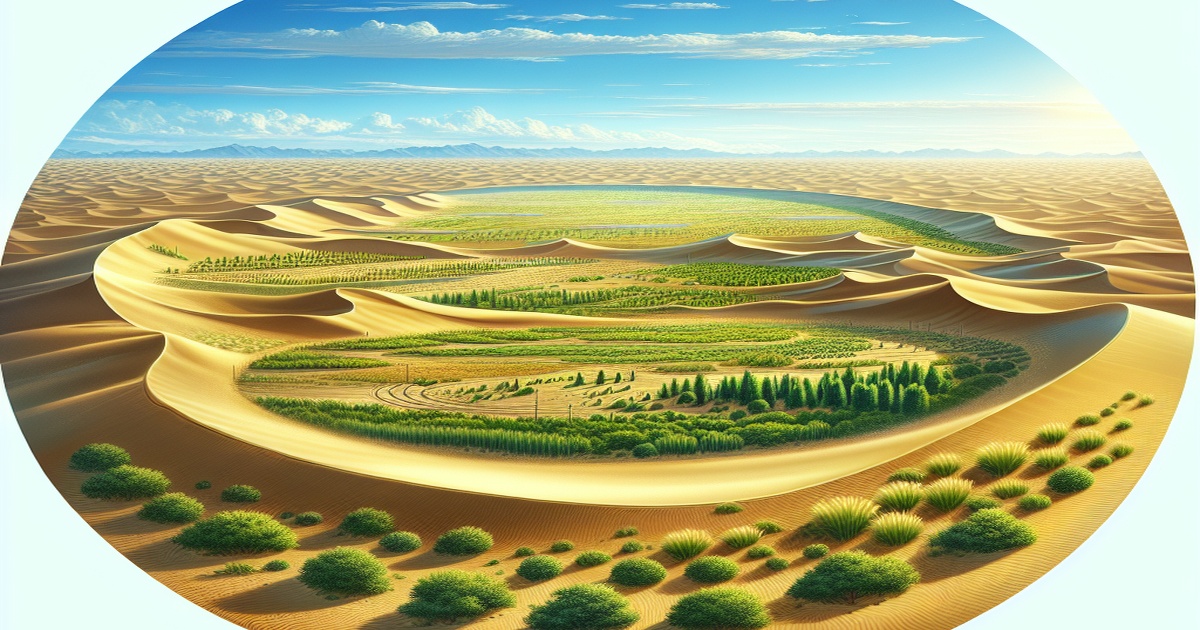Encircled by a Green Belt
The Taklimakan Desert, also known as the "Sea of Death," has been completely encircled by a sand-blocking green belt. This remarkable feat of engineering and environmental restoration marks a significant milestone in the fight against desertification.
The final stretch of the green belt, spanning 285 kilometers, was completed in Yutian County, located on the southern edge of the desert. This segment involved planting saplings of desert poplar, rose willow, sacsaoul, and other drought-resistant plants across a 100-meter wide strip of sand.
With an area of 337,600 square kilometers and a circumference of 3,046 kilometers, the Taklimakan is the largest desert in China and the world's second-largest drifting desert. The completion of the green belt signifies a major victory in the ongoing battle against its expansion.
The project's success is a testament to the dedication and collaboration of various stakeholders. Since 1978, the central government has been actively involved in the Three-North Shelterbelt Forest Program, a national-level forestation project. Over the past four decades, Xinjiang has witnessed a gradual increase in reforestation, culminating in the formation of a 2,761-kilometer sand-blocking belt around the desert by the end of 2023.
The final 285-kilometer gap between the southern and southeastern edges of the desert posed the most significant challenge. To overcome this obstacle, the region implemented scientifically sound sand control strategies, integrating resources from various areas and transcending administrative boundaries.
engineering sand control, photovoltaic sand control, and biological sand control. In areas with favorable water and soil resources, biological sand control took precedence, involving the planting of drought-resistant plants to create a barrier.
In regions with scarce water resources and distance from oases, photovoltaic sand control was the primary method. This involved the installation of large solar panels, which not only generated electricity but also reduced surface wind speed, decreased wind erosion, and stabilized the soil.
The land beneath the solar panels provided an opportunity to plant drought-resistant plants or crops, further contributing to sand stabilization through their root systems. This approach achieved the triple benefit of electricity generation, increased agricultural income, and sand control.
The completion of the green belt marks a significant step towards preventing the further spread of sand from the desert, protecting oases, and safeguarding infrastructure such as railways and roads. This comprehensive effort will contribute to the consolidation of the ecological security barrier in northern China.







7 Comments
Karamba
The green belt serves as a reminder of the positive impact humans can have on the environment when we work together towards a common goal.
Matzomaster
The article mentions the protection of infrastructure. Shouldn't the focus be on protecting people and their livelihoods first?
Rotfront
This project inspires future generations to continue the fight against desertification and protect our planet's biodiversity.
Matzomaster
The completion of the green belt is a victory for everyone who cares about protecting our planet and ensuring a sustainable future.
Karamba
This project proves that even the most challenging environmental problems can be tackled with determination and innovative solutions.
Raphael
While this is a positive step, it's crucial to remember the enormous resources and manpower needed for this project. Are there more sustainable and cost-effective solutions in the long run?
Noir Black
Planting trees isn't enough. We need to address water scarcity and soil degradation within the desert itself. Otherwise, the green belt might just become an isolated island in a sea of sand.